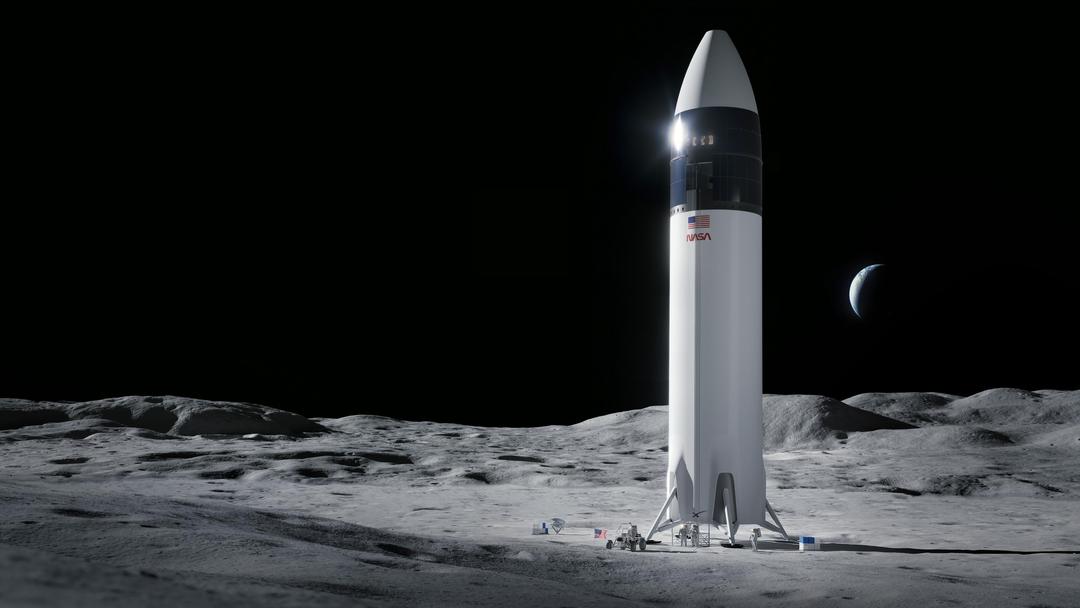On October 13, a groundbreaking event took place in Boca Chica, Texas, where SpaceX successfully landed its Starship rocket upright next to a colossal metal landing tower. This remarkable feat was achieved as the rocket was gently caught by two converging "chopstick" arms, marking another historic achievement for SpaceX and its powerful Starship.
A Major Leap for Space Exploration

The mission, which took place on a Sunday, was the fifth test flight for Starship—a rocket towering nearly 400 feet, made up of the Super Heavy booster and the Starship spacecraft. The significance of this successful landing cannot be overstated, as this system plays a central role in SpaceX founder Elon Musk's vision to colonize Mars, as well as NASA's ambition to return astronauts to the moon. Musk has stated that in the coming two years, up to five uncrewed Starship missions to Mars are planned, with the potential for crewed missions in the future.
In addition to the successful landing, the spacecraft performed flawlessly, splashing down exactly on target. However, the true highlight of the mission was the safe retrieval of the booster, a crucial step toward SpaceX's goal of making all of its rockets fully reusable. By doing so, the company aims to enable more frequent and ambitious space missions.
"A big step toward making life multiplanetary was achieved today," Musk shared on X following the successful catch.
Achieving Full Reusability

For several years, SpaceX has been landing the booster stage of its Falcon 9 rocket on both sea-based barges and land-based pads. Afterward, the booster is transported for refurbishment before being relaunched. However, the second stage of the Falcon 9 is typically discarded. Starship is designed to be fully reusable, marking a critical shift in spaceflight technology. The rocket's ability to return directly to the launch site is a key element of SpaceX's broader plan to develop rockets that function similarly to airplanes—landing, refueling, and flying again within short turnaround times.
Starship's Role in NASA's Lunar Ambitions

Precision landings, like the one demonstrated during this mission, are of particular importance for future lunar missions. NASA has invested roughly $4 billion into the Starship program, intending to use it to transport astronauts back to the moon as part of its Artemis mission. NASA aims to explore the lunar South Pole, a region characterized by challenging terrain and lighting conditions. To ensure success, spacecraft must land in specific, resource-rich areas. NASA has already identified 13 potential sites that meet these requirements.
A Complex Catch Maneuver

Sunday's launch took off from a site near Brownsville, Texas, at 8:25 a.m. Eastern time. Once the spacecraft separated from the booster, it continued its ascent into space while the booster began its return journey to Earth. According to SpaceX, the decision to attempt the catch maneuver was not made until the booster was already descending. The process was subject to stringent criteria—thousands of conditions needed to align for the catch to proceed. Had any of these conditions failed to be met, the booster would have splashed down in the Gulf of Mexico.
As the booster fell back to Earth at an angle, its engines reignited to slow its descent. The chopstick arms then closed around the booster as it aligned with the tower. For a few moments, the rocket remained suspended, emitting flames, before coming to a complete stop.
A Step Forward for SpaceX and Space Travel

The successful catch was met with applause from SpaceX employees on the ground, as well as admiration from spaceflight experts. SpaceX engineers had spent extensive time upgrading both hardware and software to ensure the mission's success. Astronomer Jonathan McDowell from the Harvard-Smithsonian Center for Astrophysics shared his amazement, stating, "I didn't expect this to work," in a post showing the captured booster suspended from the chopstick arms.
NASA has expressed continued confidence in SpaceX's progress. NASA Administrator Bill Nelson congratulated the team, emphasizing that the test flight supports the agency’s long-term lunar exploration goals.
"As we prepare to return to the moon under the Artemis program, continued testing like this is critical for the bold missions ahead, including exploring the Moon's South Pole and eventually heading to Mars," Nelson remarked.
The Road Ahead

Despite this successful catch, SpaceX still has several challenges to overcome before Starship is ready for lunar missions. For example, the spacecraft will need to be refueled in Earth's orbit using a fleet of tanker ships—a complex and unprecedented process. To reach the moon, located 240,000 miles away, multiple launches and precise in-orbit operations will be necessary.
Nevertheless, Sunday’s achievement marks a substantial advancement in human space capabilities. Former Canadian astronaut Chris Hadfield remarked on X, "This is an incredible leap forward for humanity's space exploration potential. I can't wait to see what’s next."
Conclusion
SpaceX's recent success in catching the Starship rocket represents a major milestone, not only for the company but for the future of space exploration. By pushing the boundaries of rocket reusability, SpaceX is laying the groundwork for more frequent, efficient, and ambitious missions to the moon, Mars, and beyond. With precision landings now a reality, the path to multiplanetary life is one step closer to being realized. However, significant hurdles remain, particularly in refueling spacecraft in orbit, which will be critical for future deep space missions. Nonetheless, the progress achieved so far signals a promising future for both space travel and human exploration.
Test your General Knowledge! Visit:
https://www.quizzop.com/general-knowledge-quiz/category


